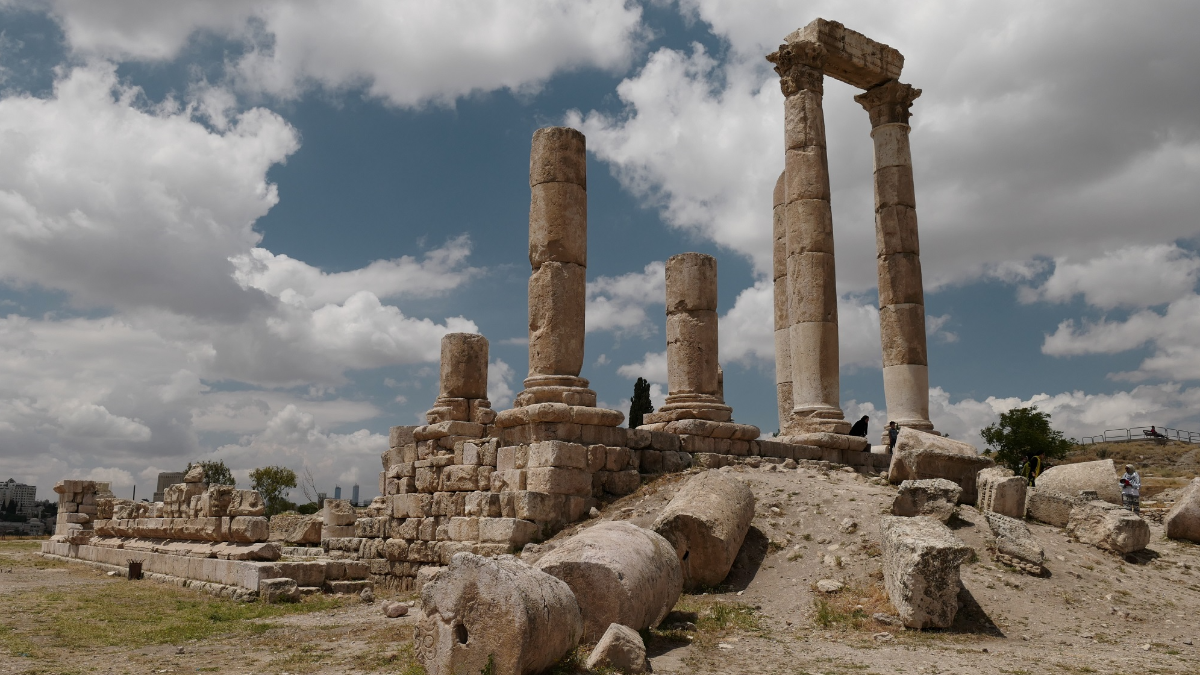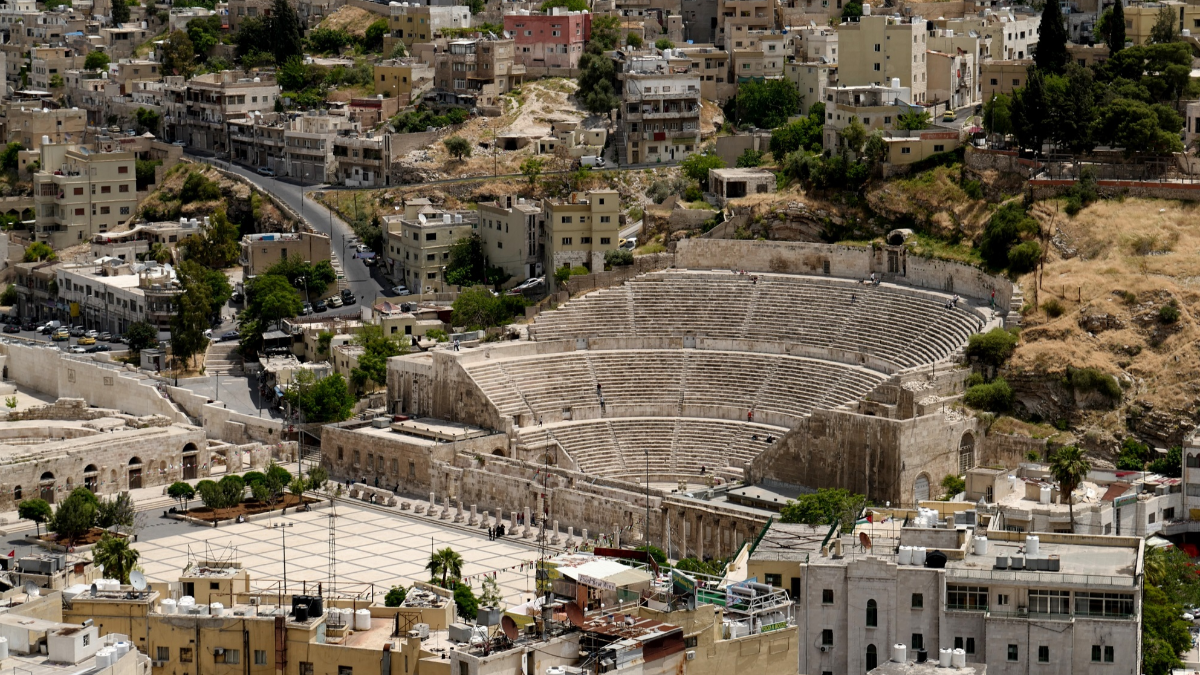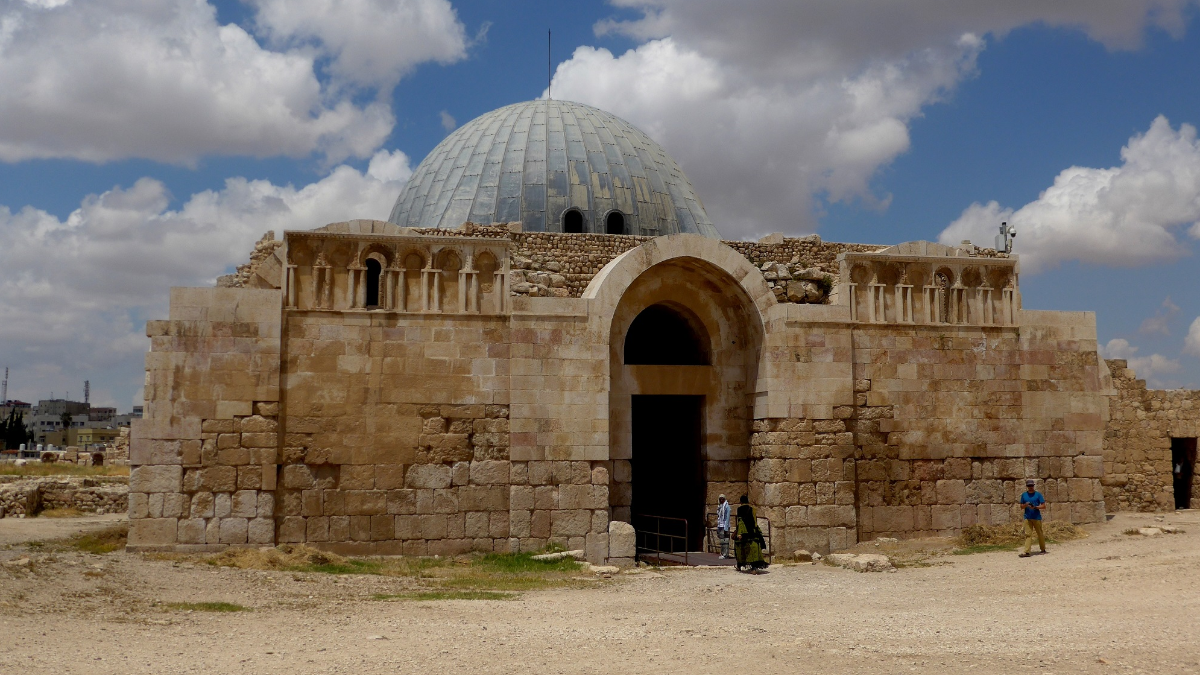
20230920
<La Vie Tang>City of Seven Hills, Amman

Jordan has a sublime fusion of antiquity and modern touch and boasts abundant tourist resources that provide its tourist industry with advantages of a series of famous historic sites, religious lands and holiday resorts. The first place I visited was Amman, the capital city as well as its largest city integrating functions of politics, economy and culture. Generally speaking, the country attracts many multinational enterprises to establish the headquarters of the Arab region here on account of comparatively favorable political scene and healthier public order, and admittedly this kind of ‘headquarter economy’ also has a certain influence on me and my business. After years of market research, in November 2018 Hantec Group opened a branch office in Amman by riding a wave of ‘Belt and Road’ initiative. Though as the commercial and financial center of Jordan, Amman doesn’t seem like a bustling metropolis with fewer high-rise buildings in CBD area, which somehow lends a hint of austere simplicity to the city.
Amman, an absolute mountain city, derives the title of City of Seven Hills from its previous location on seven hills. With its gradual development and outward expansion, the city now contains at least nineteen hills. Many dwellings, high and low, are made of white limestone and embellished with red ornaments, densely built along mountains. Hills are covered with a vast spread of milky-white by overlooking it from a height thus another name of ‘White City’ is entitled.
In Amman, not only cars but caravans often can be seen competing for the traffic. I noticed that women in the city were conservative in dressing, mostly covered in black robes. In recent years, an increasing number of young people wears jeans and western-style clothes, as my tour guide explained, but according to Islamic tenant, the scantily-clad dressing code in local females is still forbidden and generally-accepted clothes must cover arms, legs and hair. You can rarely find a man or a woman in shorts. Fortunately, such dressing restriction doesn’t apply to women from other countries as long as they don’t show too much skin. The most eye-catching sight is the Bedouins in black robe and red chequered kerchief who even wear swords and machetes around their waists. The traditional outfit was designed to travel through the desert for self-defense and sand-proofing purposes.
I followed the tour guide to the old town district soon after unpacking in the hotel, visited the ruins of the ancient Roman Theatre at the foot of the Citadel Mountain. Taking shape in the 2nd century AD, the circular building with its back against a hill is said to be capable of accommodating 6,000 people at one time, the style and exterior of which have a close resemblance to the Rome Theatre in Sicily of Italy. Having stood the test of time over 1,800 years, the outer arcades of the theatre have not completely collapsed, some with only the pedestals remaining and some surviving intact. Overall is quite well preserved. It is worthy of admiring for their theatre sound design in early years that even small voices from the performer in the middle of the theatre can be delivered clearly to every corner. I took the opportunity to have a try in the theatre, and the sound really echoed above with a pretty good acoustic. The site is currently open in service, staging large cultural performances. There are the Folk Traditional Museum and the Folk Heritage Gallery at both sides of the theatre, with not too many collections contained but still helping to spread local culture and traditions to some extent.
Amman Citadel on the Citadel Mountain is located amidst the seven hills. I arrived in the scenic park by car for a castle-site tour. The citadel of 850 meters above sea level happens to take up the highest point of the local region overlooking the entire city including the Roam Theatre under the mountains. Obtaining a panoramic view from a height, I found the grand theatre appear more majestic, like a semicircular stone tray surrounded by well-arranged dwellings and hills. In the afternoon sun, white houses in the city glittered more brightly.
At the entrance of the park displays several information boards narrating the history of the ancient city as well as the evolution of its name. It turns out that the city once had three successive names. Back to more than 3000 years BC it once served as the capital of Ammon Kingdom, namely Rabbath-Ammon, and laid the city’s foundation; in the 4th century BC when the kingdom of Macedonia conquered the city, the general of Alexander the Great, Philadelphus, expanded and also renamed it Philadelphia; in 63 BC, it was General Pompeius of Rome who began to call the occupied city Amman and carried out a large-scale infrastructural expansion, extended theatre, public bathrooms, dwellings, and other facilities. Hence, the name Amman has been used until now.
The ruins of the Citadel Mountain were first constructed by the Amon Kingdom and expanded and repaired on the original by following rulers. As the city center of successive kingdoms, it has retained architectural features of many eras, which can be regarded as a combination of multi-cultures. To follow instructions and introductions of the guideposts, I met the Emir Palace complex from the Umayyad dynasty of the Arab Empire, the Temple of Herakles dating back to Roman era and the Byzantine church with only a few pillars left. I managed to detect its former grandeur in early times from such remnants of the past. Inside the park, there also contains ruins of enclosing walls, defense works and watchtowers, as well as stone pillars, sarcophagus and broken sculptures scattered on the ground. These relics have been lying in silence on the Citadel Mountain for over 1,000 years, presenting the vicissitudes of its history to the world.
Tang Yu Lap
Hantec Honorary Advisor









The Ruins of the ancient Roman Theatre
Extended Reading
<Corporate Sandwiches>Seeing is not the same as Observation
BY Group Branding and Promotion FROM Hantec Group
Topping-out Ceremony was held for the Laboratory Building of Hantec (Yangzhou) Water Supply Company Limited
BY Group Branding and Promotion FROM Hantec Group
<About Stock Markets>Customs Open is Bound to Do, The Gains and Losses are Unpredictable
BY Group Branding and Promotion FROM Hantec Group
5th Floor, 34-36 Gray’s Inn Road, London WC1X 8HR
(44) 20 4586 8213
11/F, Gold & Silver Comm. Bldg., 12-18 Mercer Street, Sheung Wan, Hong Kong
Room 1214, Block B, Shenzhen International Chamber of Commerce Building, Fuhua 1st Road, Futian District, Shenzhen
A753, 7F, Crystal Galleria, Yuyuan Road, Jing'an District, Shanghai
Hong Kong : (852) 2916 9000
China - Shenzhen : (86) 755-8278 8726
China - Shanghai : (86) 21-5298 3788